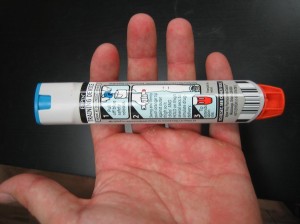There are various types of allergens that can initiate an allergic response. Take note that food allergies can be dangerous since the allergen is being consumed. Based on statistics, children below 3 years old usually suffer from some kind of food allergy. Even adults have allergies to certain foods. The common triggers include shellfish, milk, eggs and peanuts, but other foods such as garlic can also lead to a mild or dangerous reaction depending on how the body processes the food.
An individual who is allergic to garlic must be careful when eating outside since garlic is usually added as a common ingredient in many dishes. If possible, the individual must prepare his/her own meals at home to prevent the risk of triggering an allergic response.
Skin reactions to garlic
A simple way in which the body reacts to an allergen is to check on how the skin of the individual reacts upon contact with the food. The prevalent allergic reactions on the skin include hives, swelling, rashes and itchiness. Take note that these reactions tend to vary depending on the sensitivity level of the individual to garlic and the amount that was ingested or exposed to.
Swelling
The skin is the usual part of the body that is always affected during an allergic reaction to garlic. Swelling can occur on the face, mouth, lips, tongue and throat once exposed to garlic. In some cases, the swelling can be severe that it interferes with the ability of the individual to breathe. Understandably, this will lead to dizziness, wheezing, lightheadedness and even fainting due to the diminished supply of oxygen to the body.

Gastrointestinal reaction
The symptoms of an allergic reaction to garlic can cover the digestive system as the food passes through the body. The symptoms include abdominal pain, vomiting, diarrhea, cramping and nausea. These symptoms usually manifest within a few minutes after eating garlic or foods that contain garlic.
Anaphylaxis
When a severe reaction occurs upon exposure to garlic, it is called as anaphylaxis. Most cases of individuals who have food allergy do not experience this type of reaction but those who have a family history of the reaction or has a previous experience are at risk. The symptoms of anaphylaxis include low blood pressure, difficulty breathing due to the constricted airways, dizziness, rapid heart rate and fainting. This reaction must be treated right away since it can progress into coma or even death.
Individuals who are prone to allergic reactions usually bring along an EpiPen wherever they go. This is an injectable form of epinephrine that is administered during the onset of the initial signs of a severe reaction. Once a shot is given, the individual must be taken to the hospital for further assessment and treatment. An emergency course will prepare you on what to do in case a family member experiences a severe reaction.
